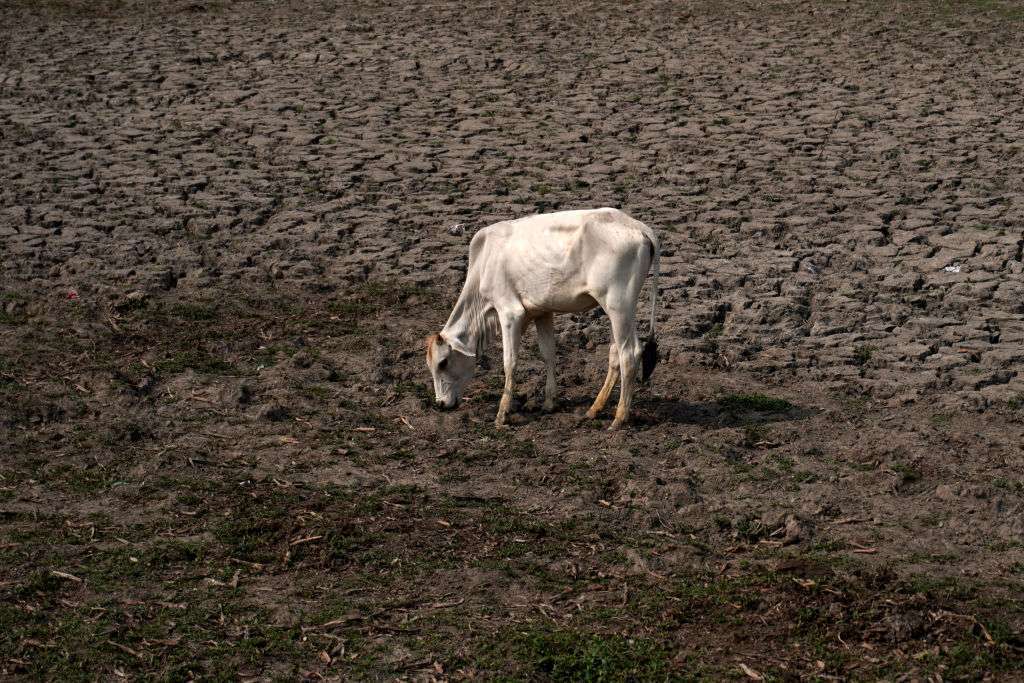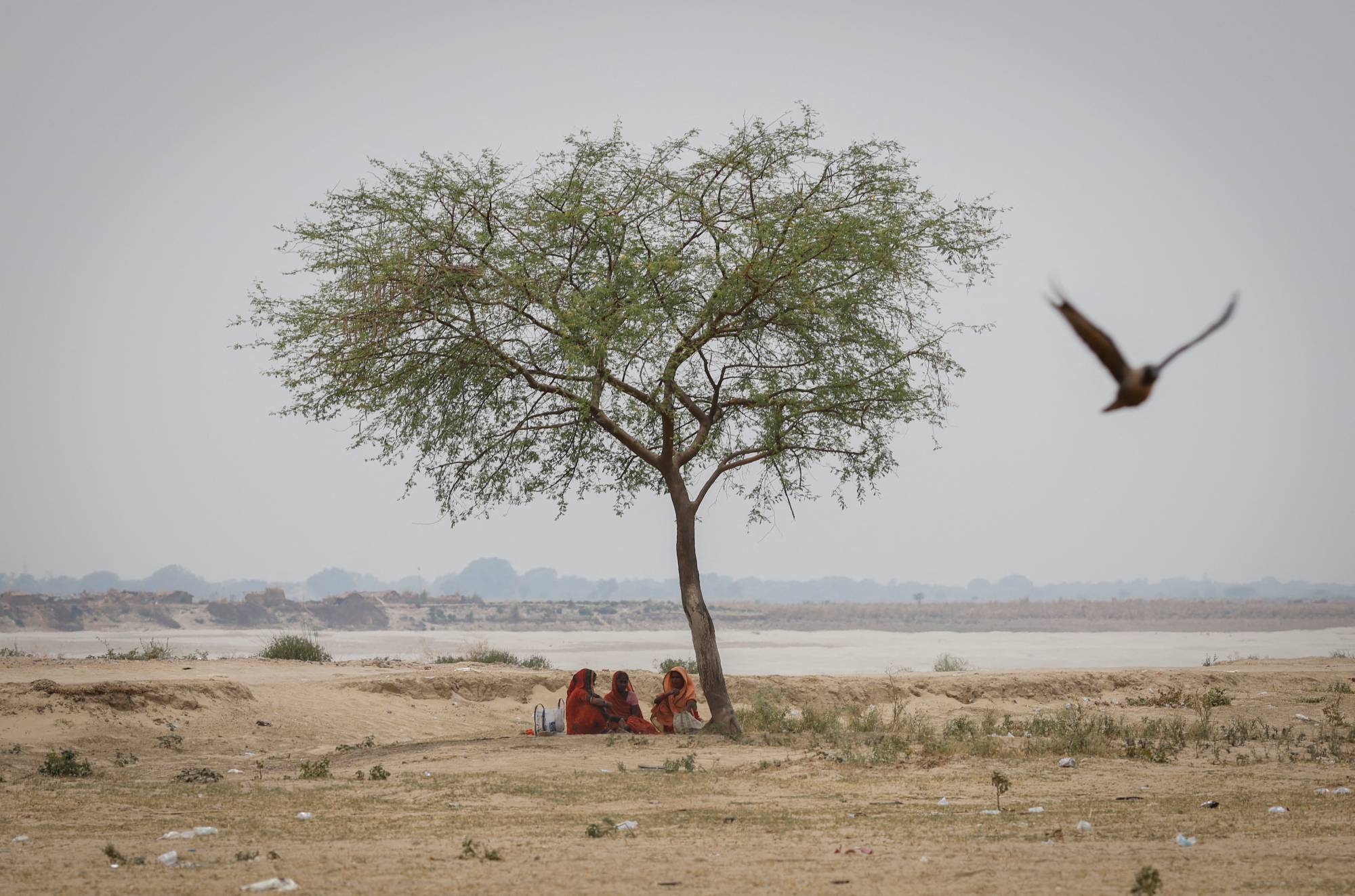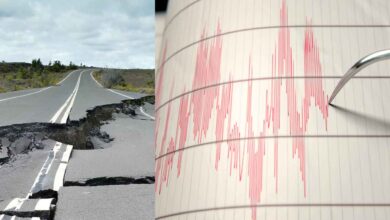The Dangerous Equation Between India’s Economy And Heatwaves, A Warning Bell And Why Modi Govt Needs To Stop Giving Environmental Clearances, The Highest To Date By Any Govt In India!

Perhaps, not many would have wondered that there is a direct relation between India’s economy and heatwaves!
The northern part of the country is reeling from scorching temperatures that have already claimed many lives. However, if we think this is just an isolated incident, we need to reconsider quickly, as the warnings are clear and urgent.
The country is confronting a reality many prefer to ignore.
Over the past few weeks, India has experienced its longest recorded heatwave, which continues as the northern regions desperately await the monsoons.
To put this in perspective, at least 143 deaths have been recorded, and a staggering 44,000 people are reportedly suffering from heatstroke.
Is this an isolated case?

Absolutely not. Heatwaves have become more pronounced in recent years. For instance, India recorded its hottest March in 2022, marking 122 years of record-keeping, and extreme humidity resulted in 13 deaths in one day in April 2023 in Navi Mumbai.
Over the past few weeks, India has faced this harsh reality with the ongoing heatwave, the longest ever, coinciding with a marathon election.
The Scorching Highs Of Heatwaves
India is increasingly experiencing hotter temperatures due to human activities.
A study by the World Weather Attribution Initiative confirmed that extreme heat in South Asia during the pre-monsoon season is becoming more frequent and that climate change has played a significant role in raising the average temperature in April 2024.
Extreme temperatures are now about 45 times more likely and 0.85 degrees Celsius hotter. In other words, heat across India isn’t just increasing; it is steadily climbing higher.
The Warning Bells
The reason it is time to wake up and recognize the signs is apparent—heatwaves and their increasing frequency have serious implications not only for countless lives and health but also pose a formidable challenge to India’s economy.
The Economic Impact
How, you may ask?
 Consider this: India has the largest population in the world, and for a country of this size, agriculture plays a crucial role in ensuring food security.
Consider this: India has the largest population in the world, and for a country of this size, agriculture plays a crucial role in ensuring food security.
However, the increasing heatwaves pose a massive challenge for the agricultural community, which will struggle with critical water resources and disrupted crop cycles. This is essentially a disaster waiting to happen!
Over the past two years, India’s wheat harvest has shrunk due to severe heatwaves during the March-April period.
The current heatwave may further impact wheat output and also affect the yield of crops such as rice and sugar. Moreover, heat also affects crop quality.
Any crop failure or lower quality yield for farmers already burdened with the costs of seeds, fertilizers, and other agricultural essentials could spell disaster and more debt.
Consumer Impact=Rising Costs
The impact of heatwaves is not limited to agriculture alone; for consumers, this could mean prolonged and uncomfortably high food inflation.
While, government interventions like easing imports or curbing exports may have a limited impact on staple prices for the short term but these measures will have little to no effect on the prices of vegetables, which have much shorter shelf lives.
Reports already indicate spoilage in harvested crops such as tomatoes and onions.
Milk prices have already been rising, and earlier this month, both Amul and Mother Dairy increased prices across all markets.
Groceries constitute close to a quarter of total household expenses, and these costs have been steadily rising; surveys indicate growing concerns among middle-class families about how to cope with these increasing expenses.
 It’s Time for Action
It’s Time for Action
None of this, nor other economic outcomes from intense heat is something that the Modi governemnt is not familiar with.
For instance, the Climate Transparency Report of 2021 noted that Indian rice production could decrease by 10 to 30 percent, and maize production could drop by a staggering 25 to 70 percent with temperature increases in the range of 1-4 degrees Celsius.
The report also warned that extreme heat could make it unbearable and dangerous to work in various economically important sectors.
The potential income loss in 2021—from reduced labour capacity due to extreme heat—in the service industry, manufacturing, agriculture, and construction sectors was estimated at $159 billion, which is over 5 per cent of the country’s GDP.
Meanwhile, Power demand is already surging while coal stockpiles are running low, reminiscent of the acute power shortage India faced in 2022.
Lack Of Responsibility
What has the Modi government’s track record been in response to this clear and present heat danger?
At COP26 in 2021, the Prime Minister pledged to reach net zero by 2070. However, coal still accounts for over 50 per cent of the country’s energy needs.
The Prime Minister must be aware that burning fossil fuels and reducing forest cover is a recipe for disaster in a country where nearly 90 per cent of districts are believed to be in a “danger zone” from heatwave impacts.
In fact, the NDA government holds the unique distinction of issuing environmental clearances at an exceptional speed.
Before the recent general election, the Election Commission allowed the environment ministry to issue green clearances despite the Model Code of Conduct.
The Parivesh Portal, set up to track clearances for large projects, shows that 675 projects have been granted environmental clearance this year alone.
- In 2023, State Environment Minister Ashwini Kumar Choubey informed Parliament that the time taken to grant environmental and coastal clearances had reduced from over 150 days in 2019 to less than 70 days in 2022; why?
- Forest clearances saw the waiting time reduced by about a week to around 180 days; why?
- An amnesty window opened in March 2017 to clear projects in a novel “violation category” was converted into a routine process through a Union environment ministry notification; again, why?
This window provided ex-post facto approval to over 100 projects until the Supreme Court stayed the notification in January this year.
 The Adani’s, Ambani’s Etc. VS Common Citizens
The Adani’s, Ambani’s Etc. VS Common Citizens
It should be noted that many of these clearances and industry relationships involve quid pro quo arrangements.
For example, Vedanta Ltd., a mining conglomerate, has been accused of covertly campaigning to allow mining companies to significantly boost production without securing new environmental clearances.
Vedanta has repeatedly violated environmental regulations across its mining and oil and gas projects in India.
Let us put a link here. According to data released by the State Bank of India, Vedanta is a buyer of electoral bonds worth Rs. 400.65 crore.
Rampant Clearances
Rampant environmental clearances for large industrial projects are wreaking havoc on India’s climate.
For example, in Himachal Pradesh, four-lane highways have been carved through hills (in the name of development) while clearances given to unplanned buildings on riverbanks collapse like Jenga blocks during torrential rains, all illustrations of the damage caused by excessive and irresponsible development.
As heat sears through northern India, plans are underway to build a $9-billion mega-infrastructure project in the Great Nicobar Island.
This project includes a massive transhipment terminal, an airport, a township, and a gas and solar power plant, all at the cost of felling over 13,000 hectares of rainforest. Is it even worth it?
 Are We Ready To Face The Repercussions, India’s Economy?
Are We Ready To Face The Repercussions, India’s Economy?
India’s economy faces serious damage from severe heatwaves, worsened by dwindling green cover and urban living spaces struggling with rising water and electricity demand.
Beyond economic damage, lives are at stake. Public administration has been woefully unprepared for the heat crisis.
In fact, conducting elections during the peak summer heat was more important for the Election Commission, showing its myopic and criminally obtuse decision to hold elections over 44 days during the peak of a dangerously hot summer.
The Woes Of Economically Impoverished
The current heatwave has caused death and illness, more so for the economically disadvantaged.
The poor have limited access to water, electricity, and medical attention and they do not live in air-conditioned homes or leafy neighborhoods; instead, they reside in cramped housing with poor insulation and cooling mechanisms.
 They lack pumps to extract water from deep within the earth, relying instead on chasing water tankers and queuing in the scorching heat for a bucket of water.
They lack pumps to extract water from deep within the earth, relying instead on chasing water tankers and queuing in the scorching heat for a bucket of water.
Meanwhile, doctors are immersing patients in icy water, and surgeries are postponed due to water shortages and prolonged power outages.
The Only Solution
The focus now urgently needs to be on addressing the ‘heat emergency’ in many parts of India and providing support, shelter, and care to those affected.
However, we must not let this crisis pass without action, the government may live in denial, but we as citizens should not!




